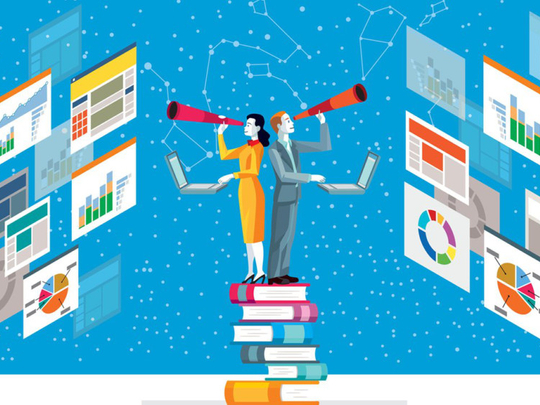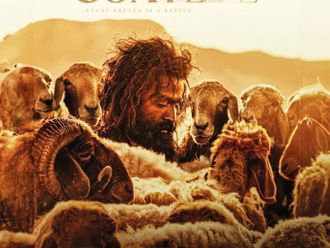
How are creative writing courses changing literary culture? It’s the kind of imponderable, unanswerable question that sets writer against writer, critic against critic, with little sign of any resolution. But what if you could just measure it?
That’s the promise of cultural analytics - computer-powered criticism currently on the rise across the humanities. The growing push of big data into English departments can traced in headlines; this year alone we’ve seen scientists find evidence of mathematical structures in classic books, researchers claiming that complex narratives are formed from just six “core trajectories” and a study suggesting MFA programmes have had little effect on the contemporary novel (apart from MFA writers preferring names such as Ruth, Pete, Bobby, Charlotte, and Pearl).
The results may be very different, but the basic strategy is just the same: take hundreds or thousands of books, feed the text into a computer and subject it to statistical analysis. But why is this method on the rise? What are researchers hoping to achieve? And can computers tell us anything valuable about what we read?
According to Andrew Piper, one of the authors on that study of MFA programmes, the growth in cultural analytics isn’t only down to better tech and our ability to handle bigger datasets. “There is a major flaw to all methodologies in the humanities,” he says. “Traditional methods are not able to generalise in legitimate and transparent ways - though we have tried.”
Think of the critic who reads a few poets and generalises about “modernity”, or the anthropologist who studies a few actors in a specific place and generalises a region, where the area considered is “always larger than the space actually observed”, Piper says. Cultural analytics can do the heavy lifting humans can’t (or won’t) do. “Traditional scholars who work at small scale never like to admit they may have a sample bias or a problem of generalisation,” he says. “That’s what is changing.”
Piper, who runs a digital humanities lab at McGill University, in Montreal, expands on this argument in the introduction to his new journal, Cultural Analytics. He begins by considering Erich Auerbach’s monumental study of western literature, Mimesis, published in 1953 and hailed as one of the landmark works in 20th-century criticism. It delivered categorical judgments on works from Homer through to Virginia Woolf. “Who would ever presume to have read more than Auerbach?” Piper writes. “But what if he actually hadn’t read enough?”
An individual scholar can only consider or read a certain number of books in a lifetime, so how can anyone hope to truly grasp a phenomenon as broad and varied as modernism, let alone place it in a historical context? It is only by analysing a large number of texts and by clearly specifying which ones we have studied that we earn the right to draw general conclusions - and the loss of detail that comes from considering literature in bulk is the price we must pay if we want to generalise. “We can’t know something at the general level as complexly as we can at the local level,” Piper says. “There is an inverse relationship between the number of things considered and the complexity of what can be known about them.”
But for Josh Cohen, professor of modern literary theory at Goldsmiths, University of London, Piper’s solution risks erasing the very differences that make culture worth studying in the first place. English departments have attempted to address the problem of small sample size for years - interrogating the canon of dead, white males by examining works by women and minorities, for example - but Cohen says: “I don’t believe analytics is the answer to the problem.”
Some books have always been more important than others in shaping literary culture, Cohen continues, emerging through processes influenced by class, race and gender, as well as aesthetic quality. Traditional critics have taken this as a given, and so have focused on studying those works more closely. “But is this such a bad thing?” Cohen says. “The alternative is that we analyse culture as if this process of transmission hadn’t occurred, which as far as I’m concerned is to travesty culture itself. The process by which certain texts gain cultural privilege is screened out as though it didn’t matter - there’s something unwittingly distorting, even dishonest, about that.”
Compare Francis Ford Coppola’s Oscar-winning 1972 masterpiece The Godfather with The Don is Dead, a lesser-known mafia drama by Richard Fleischer that was released a year later. “From the perspective of analytics ... [they] are both early 1970s gangster movies. Treat them as part of the same, undifferentiated cultural soup and, as far as I’m concerned, you’ve lost everything about them - either of them - that makes them interesting,” Cohen says.
Computers simply cannot account for human experience; no matter how much data you have, “[it] will yield no insight into the way texts and cultural phenomena of any kind become the object of love, hate, indifference, disgust ... culture is an irreducibly and intrinsically subjective phenomenon. This subjectivity isn’t an inconvenience that can be discretely brushed aside or bracketed off.” The rise of computing in the humanities is testament to the “increasing prestige of metrics”, Cohen continues, methods that come from science and which discount individual experience as “hopelessly subjective and parochial”.
According to the Booker-longlisted novelist AL Kennedy, the rise of cultural analytics stems from “a university mindset that doesn’t trust the arts and that does trust something to do with figures and computers - while not understanding them”, part of a culture that “likes tick boxes and learning outcomes”, but with “no space for teaching and no space for learning”.
“The research culture has run out of anything sane to say about literature and is now groping around for further ways to not really analyse anything,” says Kennedy. “It’s like hitting a painting with a fish - why would you? “Academia slowly decided - faster in the 1980s - that there was no way of judging artistic merit and that it might not even exist. So I suppose you have to find some other scale. The one they’ve picked is bizarrely inappropriate.”
Kennedy is unconvinced by Piper’s argument that small samples are a fatal flaw in traditional criticism. “I’m really not sure the samples are that small,” she says, “and it depends what it is you’re trying to find out. This seems to be a tool that has no purpose, designed by people who don’t understand something, on behalf of some other people whose lack of understanding is different but equally profound.”
Analysis produced by cultural analytics, such as a study where University of Vermont attempted to identify core components in storytelling, is completely useless to writers, Kennedy says: “Breaking storylines into component parts is meaningless and unhelpful unless you want to write bad screenplays of market methods of writing badly.”
Piper is equally critical of the Vermont study, dismissing it along with others as “examples of why we can’t leave the computational study of culture to the computer scientists.” He adds: “They are going to be important partners for sure, but their ability to talk about literature and culture in meaningful ways is pretty limited - the results are awfully reductive, or opaque,” he says.
But framing cultural analytics as a battle between science v not-science misses the point, Piper believes. “Literary and cultural studies ... have always thought about themselves as a ‘science’ in the more general sense of wissenschaft - a form of knowledge with methodological norms, expectations, and so on.” A dissertation has always been defended with evidence, even in the humanities. “It’s just that now we’re adding in new kinds of evidence and new kinds of methods.” Instead of acting as a barrier, Piper believes these new methods are putting researchers into closer engagement with the text. “There is a myth that when you read something with a computer, you aren’t reading,” he says. “That is a misunderstanding. I read more closely now than I ever have. In order to understand how to model a problem I need a very clear understanding of what I am talking about ... For me to understand nostalgia, I need to clearly define it and collect examples of it. This is the closest kind of reading.”
Could cultural analytics reveal patterns unavailable to human readers? Can computers uncover literary truths that might inspire the contemporary novelist? Kennedy remains a sceptic: “Anything that’s purely based on number crunching would give you the narrative equivalent of sausage stuffing.”
— guardian.co.uk (c) Guardian News & Media Ltd, 2016








